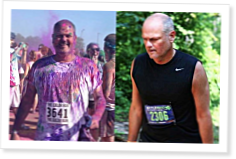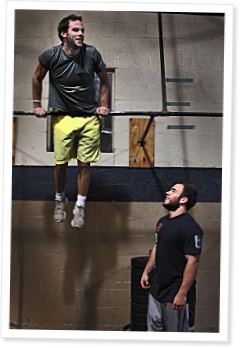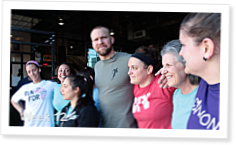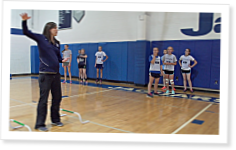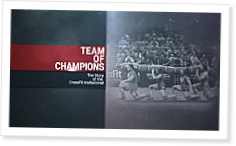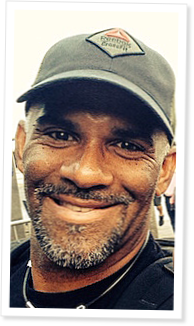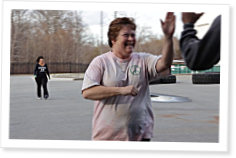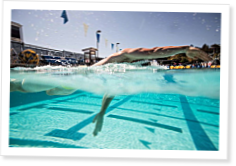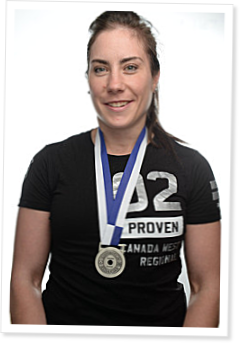by Bill Starr
“The Olympic Trials were held at the World’s Fair in Flushing, New York on August 21st and 22nd, 1964. The contest was held in a large, covered pavilion and admission was free. I have always believed that this was the greatest weightlifting meet in the history of American Olympic lifting.”
Read More
var addthis_config = {"data_track_addressbar":true};
“While Bill rather easily won three straight Seniors, 1964 was going to be different. This was an Olympic year and athletes in all sports always trained a great deal harder. Although there were no young lifters stepping up to challenge Bill, there were a couple of seasoned veterans that were making it clear that they could defeat him.”
It has always struck me as being oddly coincidental that the only two athletes that Doc Ziegler personally taught his isotonic-isometric program on the power rack and the only two who received prescriptions for the anabolic steroid Dianabol from him ended up going head-to-head at the 1964 Olympic Trials. Bill March and Louis Riecke had arrived at this momentous juncture by following very different paths. Riecke was 38 years old and had been competing in Olympic lifting for 24 years. March was 27 and had exploded on the scene just four years earlier, adding 100 pounds to his total and then winning the Senior Nationals in ’61, and again in ’62, ’63, and ’64.But at the ’64 Seniors, Bill had his hands full holding off Riecke and the veteran champion from Chicago, Clyde Emrich. Bill was still the favorite to take the Olympic Trials, but Louis had been making steady progress since the Seniors and everyone figured that it was going to be a close battle. The two athletes’ styles were in direct contrast to one another. Bill moved the weights with pure power; Louis lifted with precise form. Bill held the World Record in the press with 354 and Louis established the world mark in the snatch as a 181er at 325. Bill was deliberate; Louis was just plain fast.The Olympic Trials were held at the World’s Fair in Flushing, New York on August 21st and 22nd, 1964. The contest was held in a large, covered pavilion and admission was free. I have always believed that this was the greatest weightlifting meet in the history of American Olympic lifting. While the ’68 Seniors in York was indeed full of drama and enthusiasm and the World Championships in Columbus in ’70 was extremely exciting, I still vote for the Trials at the World’s Fair.What made it so special was that it exposed thousands of people to Olympic lifting. Men, women, and children who had never even heard of the sport came wandering in to rest their weary legs and got caught up in the tension and enthusiasm of the hardcore aficionados in attendance. The visitors who came in the pavilion to rest or to see what all the cheering was about got caught up in the excitement and stayed for the duration of that class. They became enthralled and cheered as loudly as the 2000 true fans whenever a lifter made a successful lift.On the first day of competition, I was sitting at the back of the venue to catch a bit of air. A man came inside, then stood and watched the action on stage. The 132-lb class was competing. When Ike Berger pressed 264, the man rushed outside and shouted, “Hey, you guys! Come in here! You got to see this! These little guys are lifting huge weights over their heads!”By the time the very impressive middle heavyweights took the stage, there was standing room only. This meet, more than any other, stirred the interest of the general public about the sport of Olympic lifting.Bill certainly had his work cut out for him. He was matched against the best in the country, with the exception of Clyde Emrich, who Bill had beaten at the Seniors in June. Dr. John Gourgott, a teammate of Riecke from New Orleans, was making fast, impressive progress. Jim George brought a wealth of experience to the contest. He had been a member of eight World Championship teams and had the reputation of being able to come through in the clutch when the chips were on the table.Rosalious White and Gerald Englebert had been in the top tier of this division for a long time, but with March’s and Riecke’s amazing improvement, they were not in contention for the coveted two spots on the Olympic team.A big factor at the Trials was the overbearing heat and humidity. The fans suffered since there was no air-conditioning and the place was packed with hot bodies. The muggy atmosphere took its toll on many lifters, but it could not be avoided. Walter Imahara, Homer Brannum, Tommy Kono, John Gourgott, Jim George, and Joe Dube failed to total.The sultry weather played havoc with Bill because it caused him to cramp more easily. He had trouble with cramps even in air-conditioned facilities, so he knew from the onset that he was going to have problems during the meet.When Dr. Gourgott failed to make any of his snatches after matching Bill on the press with 330, and Jim George also bombed on the snatches, it came down to Bill and Louis, just as everyone expected. Bill lead after the presses, but his calves started cramping severely. He had planned on making 341 or 347 to build up a big lead over Louis, but had to settle for his opening attempt. The weather didn’t seem to bother Riecke in the least. Perhaps training in New Orleans had contributed to this advantage. He made a strong 325 press, so he was right on Bill’s heels and was, by far, the better snatcher.While the humid conditions were a factor in Bill’s cramping, so was the extreme dehydration he experienced from having to drop weight in the last few days before the meet. He knew he needed to make a big number in the snatch or he would be trailing his opponent going into the final lift. It didn’t happen. He only made 292, and Riecke quickly took advantage of the opportunity. He made 319 with power to spare, putting him in the lead by a comfortable 22 pounds. His snatch weighed out at 322 ½, which finally replaced the 316 ½ American Record held by Dave Sheppard.With the boisterous crowd cheering him on, Louis called for 330, which would be a new World Record. It turned out to be a mistake, but of course, hindsight is easy. He tore a muscle in his thigh that extended up into his groin.This changed things dramatically. Would he even be able to do a clean and jerk? Somehow Louis managed to do 363, which under the circumstances was remarkable, yet he had left the door open for Bill to move past him. March needed 391 to win and secure a berth on the Olympic team – a number well within his capacity, although not on this day. The cramps, which had started in his calves, were now also in his hands, thighs, hamstrings, and back. He failed on all three attempts, making Louis the champion with a 1008 ½ total. His total and press were both personal bests.{pagebreak}So, Louis was in and Bill was not? Not exactly. Members of the Olympic Committee who were present: Clarence Johnson, Rudy Sablo (who also was the director of the meet), Harry Freeman, John Terpak, Peary Rader, and Bob Hoffman decided that in order to send the very best team possible to Tokyo, there needed to be another tryout for those athletes who did not lift well in New York.Many fans and active lifters believed that Hoffman was behind this decision since he wanted Bill March on this team. While it was true that Bob did want another member of the York Barbell Club to compete in the Olympics, the other members of the committee had as much to say about holding a second tryout as he did. And it must be remembered that the additional tryout was not just for March. Tommy Kono, Joe Puleo, Chuck Vinci, Gary Hanson, Sid Henry, and Lee Phillips were also given a second chance to improve their totals enough to be considered for the Olympic Team.There were other valid reasons for putting Bill on the team. He had won four straight Senior Nationals and had international experience. His record showed that he was a consistent competitor and was in excellent lifting shape. The same thing could not be said for Louis Riecke. No one knew for certain just how badly he had injured his leg and groin. What if he was unable to lift in Tokyo and Bill was left off the team? That would leave the U.S. without a lifter in the 198-lb class where they had an excellent chance of winning a medal.So the second tryout for the ’64 Olympic Team was held at the York Barbell Gym on September 6th, two weeks after the Trials in New York. Louis had been told that he would be expected to lift, but then the committee members changed their minds and informed him that all he had to do was demonstrate that he could still handle heavy weights in the three lifts. But in a way, the damage had already been done because Louis was forced to train hard during that two week interval rather than resting and rehabilitating his injury.Not bothered by cramps, Bill turned in a solid performance: 336, 292, and 392 for a 1020 total. That was a dozen more pounds than Louis’ winning total at the World’s Fair. Bill was named to the team as was Gary Gubner, who defeated Sid Henry and Lee Phillips. Joe Puleo beat Tommy Kono and was selected as first reserve that would replace any team member that got injured or could not make the trip for whatever reason. However, because the final entries had to be presented before the team left for Tokyo, Joe was left behind. Too bad. Had Joe been selected and made the same total that he did in the final trials, 942, he would have finished fourth and scored three points for the U.S. Team.The XVIII Olympaid was held in Tokyo, Japan October 10th through the 24th. This was the first time that the Olympic Games had been held in Asia and confirmed Japan’s readmission to the international community after World War II. The spectacular event drew 5140 athletes, 4457 men and 683 women from 93 countries who participated in 163 events in 19 sports.Both March and Riecke had a realistic chance to medal, most likely the bronze. The two favorites in the middleheavy class were Louis Martin of Great Britain, who had been the World Champion in ‘59, ‘62, and ‘63, and the Russian, Vladimir Golovanov, who had won the European Championship that year and was posting numbers out of reach of the two Americans. The lifter they had to beat for a medal was Ireneusz Palinski from Poland. March was a much better presser than the Pole, they were about even in the snatch, and Palinski was the superior clean and jerker. Riecke was equal to him in the press and was a much better snatcher, yet not up to him in the clean and jerk. It would all come down to who handled the pressure the best.The battle actually began at the weigh-in. March always liked to weigh in early so that he could eat something. It never bothered him in the least to eat a large amount of food after he weighed in. In fact, I’ve watched him eat a greasy sub sandwich and drink a large coke in between sets while he worked out. Bill had planned better than he had at the Trials and came in 6 ounces under the class limit. Palinski waited until all the others weighed in, then stepped on the scales. He was ¼ lb lighter than Bill.Riecke got off to a good start, pressing 325, the same as he had done at the Trials. March and Palinski started with 330 and were successful, then both jumped to 341. Palinski failed and Bill made his lift. Palinski tried again and missed again. Bill called for 347 but was unable to make that weight.Going into the snatches, both Americans knew they need big lifts because Palinski was a superb clean and jerker. Once again, Bill and Palinski opened with the same weight, 297, and made their lifts easily. Riecke opened with 308 and disaster struck. He re-injured his thigh and groin and was out of the competition. Now it was all up to March. He took 308 and missed twice, but so did Palinski. Bill still held a slim lead and he would have to dig deep to come up with a personal best in the final lift.Bill started with 391, a number well within his capabilities, yet he missed the clean and had to take it again. This time he made a strong clean and a steady jerk. But the door had been left open for Palinski and he quickly took advantage by making his first attempt at 402 with ridiculous ease. Since he was lighter than Bill, he took the bronze medal.Louis Martin put together lifts of 341, 308, and 396 for a 1045 total and 2nd place, while Golovanov led from start to finish, putting together the winning total of 1047 with 363, 308, and 396. After the leaders finished their clean and jerks, Polinski tried 423 to knock Martin out of second place, but he jumped back on both attempts and failed to clean the weight.Bill was, as could be expected, disappointed that had once again come so close to winning a medal, but he was not unhappy with his performance or his 1029 total. He knew he was capable of doing 353, 308, and 413, which would put him right at the top of the 198-lb. class.Only two Americans earned medals at the Games. Ike Berger came in second behind Japan’s Yoshinobu Miyake and set a World Record in the clean and jerk with a 336 effort – a record that would last a very long time.Schemansky won the only other medal, a bronze, finishing behind the 347 lb. Zhabotinsky, and the 300 lb Yuri Vlasov who was the World Champion from 1959 to 1963. Ski had high hopes of defeating one or both of the Russians but did not have his best day. The veteran Vlasov was expected to win, but his teammate pulled an upset. Old timers will recall that this was the contest when many thought that Zhabo had pulled a masterful fake-out job on Yuri. Going into the clean and jerks, Vlasov led by 11 pounds. On his second attempt, he did 462 which meant Leonid would have to make 479 to overtake him. Zhabo had two attempts left. On his first try with the needed weight, he barely pulled the bar to his knees, then dumped it. Vlasov took that same weight, fully believing that he had already done enough to win the gold. He cleaned the massive weight, but failed to jerk it.Zhabo had one last chance and he charged onto the platform like a man possessed and clean and jerk the weight with room to spare. Had he really suckered Yuri into letting up just a bit before his final attempt?I asked Ski about this when we lifted in a meet in Cincinnati a couple of years later. He said that there weren’t any head games going on. They just didn’t work on seasoned athletes. Zhabo had simply not been mentally ready for that first attempt with 479 and had pulled it way out of line. He dumped it to save energy for this next attempt. Then he got his head on straight and with the gold medal on the line, came through in the clutch.{pagebreak}After putting on some exhibitions with the Japanese team in Japan, Bill returned to York and began training even harder than before. He realized how close he was to being at the very pinnacle of his division and knew that it was going to take a great deal of work to move a few notches to the top. And he was always willing to do what was necessary to improve his lifts.There is always a slight letdown in the year after an Olympic year in all sports. And as 1965 rolled around, Bill found that the number of serious contenders for his crown had greatly diminished. Clyde Emrich, Jim George, and Louis Riecke had all retired from the sport. John Gourgott was now in the Army and wasn’t able to train consistently.So Bill had his way during the ’65 lifting season and never had to really push himself to win a meet. This may seem like a good thing, yet as every competitive athlete knows all too well, winning easily does not encourage improvement nearly as much as having to struggle to get to the top of the podium.However, as spring approached, a contender did appear. Bob Bartholomew from Allentown, PA began posting some impressive numbers in the middle heavyweight division. At this point in time, the usage of anabolic steroids, specifically Dianabol, had began to leak out into the weightlifting community, and also into the field events of track, since those athletes did a great deal of heavy lifting. With the aid of the steroids, Bob Bartholomew began making rapid progress and was moving into contention in the middle heavyweight division.He won the Junior Nationals with a 980 total, setting Junior National Records in the press, 325, and the clean and jerk, 380. Since Bill had not made any noticeable improvement during the lifting season, Bob appeared to be a genuine threat to him at the Seniors.But Bill was ready for the challenge. He was in terrific condition from his hard training, especially in the rack, and he had once again put on countless exhibitions. And he had the advantage of experience under pressure in big meets.There were only four entries in the 198-lb. class at the 1965 Senior Nationals that were held in the Embassy Auditorium in Los Angeles on the 11th and 12th of June. But part of the lack of competitors was due to the location of the meet. National level contests held on the West Coast never drew as many lifters as those held in the Midwest and East. It was simply a matter of economics. Travel costs money and few lifters could afford to travel long distances to compete.Dr. Gourgott had sent in his entry and he was expected to push both Bill and Bob, but he injured his trapezius and shoulder in training and was forced to withdraw. So Gerald Englebert squared off against a young lifter from Central Falls, Rhode Island, for the bronze medal. Bob Bednarski was considered a rising star in the sport, having won the Teen-Age Nationals and Juniors and setting records in both contests. The youngster was very nervous in his first Seniors and only made one success in each lift, but still managed to total a solid 950, more than enough to take third place.When Bednarski called for 320 for his second attempt in the press, the bar and weights were weighed to make sure they exceeded the current record. And it was discovered that the bar and collars were 6 ½ lbs heavy. What had happened was a bar made by Bob Hise Sr. at his Mavrick Company was used instead of the York bar. Hoffman and Mr. Hise were always at odds with one another, and this really added fuel to the fire.However, the overweight bar was not changed and the lifters had to make adjustments on their lift selections. Bartholomew and March both opened with 320 in the press, actual weight 326 ½, and made clean lifts. Bob moved to 330, which was 336 ½ and failed. This was more than he had ever done. After March made the 330, Bob took it again and made it. Bill took 340 and did it smoothly. He had planned on taking 350, but since that would be 356 ½, he wisely took a lighter number.Bob did all his snatches back-to-back. He was a splitter and this was his weakest lift. He failed with his opener at 275, came back to make it, then was successful with 285, his second personal record of the contest. With the added weight, he had done 291 ½.Bill started with 290 (296 ½) and missed. The added weight was throwing everyone off. Bill set himself and made it on his second attempt, but was unable to handle 300, which was 306 ½. At this point, Bill had a comfortable 15 pound lead and the two were close to being equal in the clean and jerk.Bill opened with 380, lost his balance and failed to clean the weight. Bob had planned on starting with 400, but with the heavier bar, he altered his thinking and took 380 to make sure he would total and win a medal. March made 380 on his second try and went on to drive 390 overhead for a 1020 total. But he had actually done 1039 ½, 10 ½ more pounds than he had done at the Olympics, and only one-half pound less than his recent American Record of 1040.Bob now needed 405 to tie Bill and win on bodyweight, but that would mean he would be attempting 411 ½, only 7 pounds less than the World Record. He elected to take 395 in an effort to increase his official total to 1010. He failed, tried 405 and was unable to rack the weight. Yet he still ended up with another personal best of 995, and with the added weight, he finished with a noteworthy 1014 total. He was definitely in the picture of the future of this class.This was Bill’s fifth consecutive Senior National Championship and he was showing that he was still the man to beat. He was selected to compete at the World Championships to be held in Tehran, Iran in October. He was gaining confidence every year and with the recent Olympics under his belt, he felt he was ready to take on the best in the world. And to outlift all of them.To be continued…
Part 1 Part 2 ::







